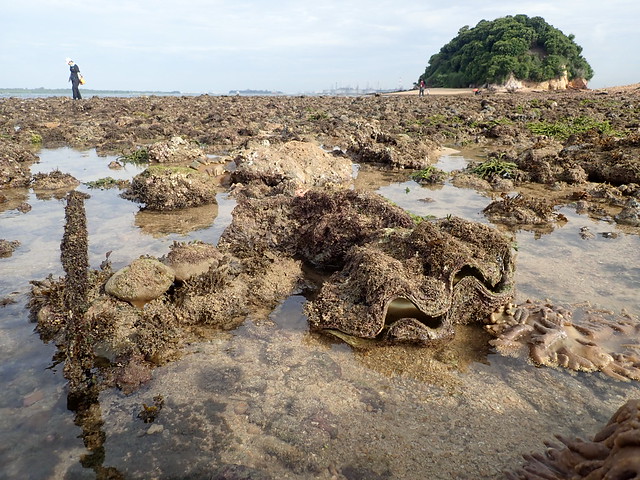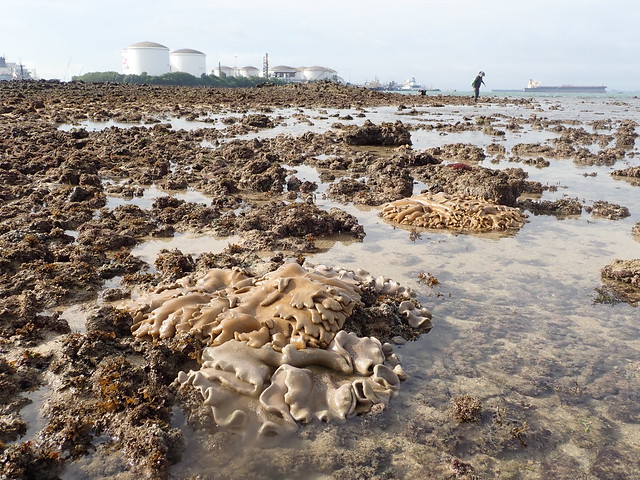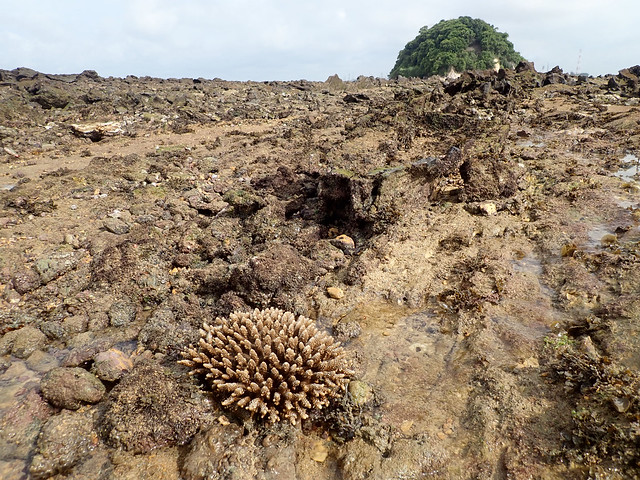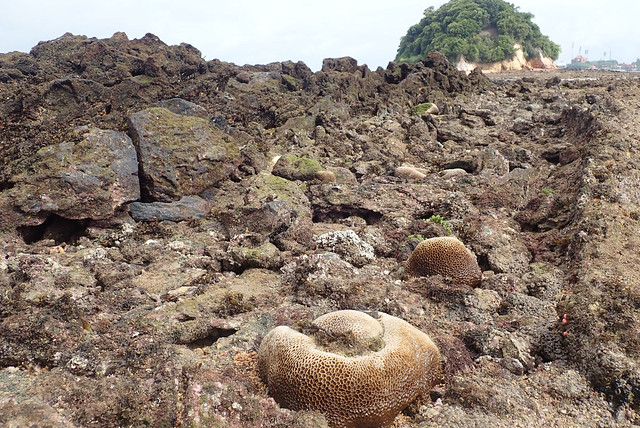But otherwise, the shore seemed fine. With a sprinkling of hard corals on the rocky shore, lots of large leathery soft corals and other amazing marine life.
The Giant clam was fine on our last survey here in Jun 2017. She is called Mama Jong because her babies were a part of Dr Neo Mei Lin's work. She has been loved and monitored for a long time. Mama Jong will be missed.
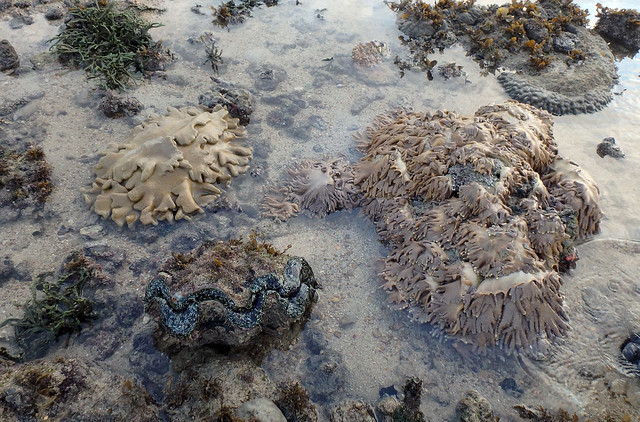 |
| Photo of Mama Jong in June 2017. |
There have never been a lot of hard corals on this rocky shore. But today, I saw a good variety of them, if not a large number.
I saw several Acropora corals. Although white, I don't think they are bleaching, just that their brown tissue have been retracted as the colonies were out of water. Although one had patches that died some time ago and is already starting to be covered by fuzzy epiphytes.
The most common hard coral were Merulinid corals. Some colonies were quite large.
Most were alright although a few were dead or rather bleachy.
Boulder pore corals are also abundant here. Most were rather pale, only a few were dark brown. Some had really white margins on the upper portions, and a few had small greyish dead portions. This is similar to what we observed on our last survey here in Jun 2017.
I did see two dying Plate montipora corals with greyish decaying tissue. And one Pebble coral with the same situation on the upper portion of the colony, although the lower portion seemed healthy.
I saw several Cauliflower corals. The white parts I think are just tissue retracted and not colony bleaching.
There were also small Brain corals, most were alright although one was rather flourescent. There were also some Disk corals, Anemone corals and Sandpaper corals, all alright.
I saw one large Barrel sponge with the upper portion that looked rather dried up and brown. But it was not decaying or melting. I did see a few melting sponges. But also many other sponges that were healthy.
Among my interesting encounters was with this very large Blue-spotted fantail ray. Which disappeared in an instant into the sand. After the cloud of sand settled, all that could be seen (if we look carefully) are two eyes. This is why we need to be careful when walking on the reef flat. Even on bare sand!
Frances spotted the Magnificent anemone that we have seen here for some time. There were many Frilly anemones. All looked fine. But we couldn't find the Merten's carpet anemone. I saw one Leathery sea fan that had some dead upper portions. There were some Asparagus flowery soft corals that looked alright, even those exposed on the rocks at low tide.
There were still patches of Sickle seagrass although they were mostly badly burnt. During our last survey in Jun 2017, they were not burnt. And tiny patches of Spoon seagrass with small leaf blades that were bright green and clear of epiphytes.
Dubbed the 'char siew pau' island because of its cute dumpling shape, Pulau Jong has a huge reef flat that is exposed at low spring tide. This reef flat together with the domed island is said to resemble the silhouette of a Chinese sailing junk, thus 'Jong'.
Pulau Jong is among the last untouched islands in Singapore. It has not been reclaimed or directly impacted by development. Pulau Jong is what all our Southern islands looked like before they were reclaimed.
Future of Pulau Jong?
Pulau Jong is one of the existing natural shores that may be impactedby the landuse plan by the Ministry of National Development released in Jan 2013 in response to the Populations White Paper with a 6.9 million population target. The dotted margined blue areas are "Possible Future Reclamation". The other shores impacted by this plan include Pulau Hantu, Terumbu Pempang Darat, Terumbu Pempang Tengah and Terumbu Semakau.

Posts by others on this trip
By Jianlin Liu
By Richard Kuah
By Adriane Lee
By Chay Hoon
By Siew Men Chong
By Dayna Cheah
Others on this trip: Amrit, Frances, Lisa.

